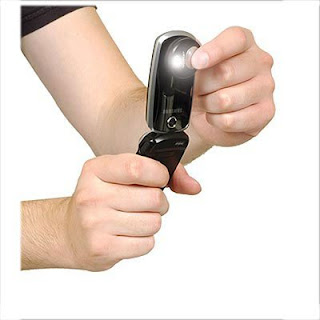
I had reported on the Wii as "Wii therapy" this past winter and had asked for tips and ideas. I received several emails and comments about it. Since then, my assistive technology department has been given a Wii to use as a therapeutic support tool. I got on the Internet this past week and found that the number of articles and sites featuring the Wii for this purpose have grown considerably.
I "launched" our Wii program at a monthly meeting of our OT/PT specialist team yesterday. I set up the Wii and gave everyone a set of handouts on the games and articles that support the Wii in rehab settings. I shared examples of the Wii being used in hospitals for all ages, from 9 to 90. Stroke victims, veterans hospitals for military, special needs students in schools, all across the country are finding the following:
1. The Wii can divert the attention of the subject off of the pain associated with movement making it easier to do the movement while bowling, boxing, playing tennis, etc.
2. "Virtual PE" from a wheelchair is possible in special needs classrooms. Children can bowl and play baseball against other students in the classroom. One school even has a "game day" where a special needs class can play another class.
3. Teachers, specialists and assistants often hold and assist the student with the Wii remote to model movement, the swing, roll, punch, etc.
4. Better circulation of limbs is occurring.
5. Games support eye/hand coordination and students are able to "whack the ball out of the park" on the Wii when they have difficulty doing other eye/hand tasks. Maybe this will help.
6. Color and shape recognition is increasing.
There are quite a few articles online if you Google Wii therapy or Wii rehabilitation. One article I loved was: Wii Solutions for Special Needs from the special needs program at the Harry E. Blair Learning Center in Bakersfield, California. I would encourage you to check it out. There are some great pictures there too.
We have purchased a Wii Fit board to work with students who are not in wheelchairs. We have a game mat/game "Outdoor Adventure", which allows students with the ability to sit on the mat on the floor to slide down a water slide and use their hands to steer to the left or right. The Wii Sports games will allow students in chairs to use muscle groups while doing the tennis, boxing, bowling, baseball, etc.
The first student to use the setup will be a 12 year old in a chair that has lost interest in doing many of the activities the occupational therapist gives him to do at school:
"Stringing beads and other hand exercises have kind of reached their limit with him," the OT/PT director shared. "Maybe this will engage him and get the muscles actions we want him to get, and make it more fun for him."
I 'll keep you posted.
All the best to you!
Lon


 O2Cool Necklace Fan
O2Cool Necklace Fan

